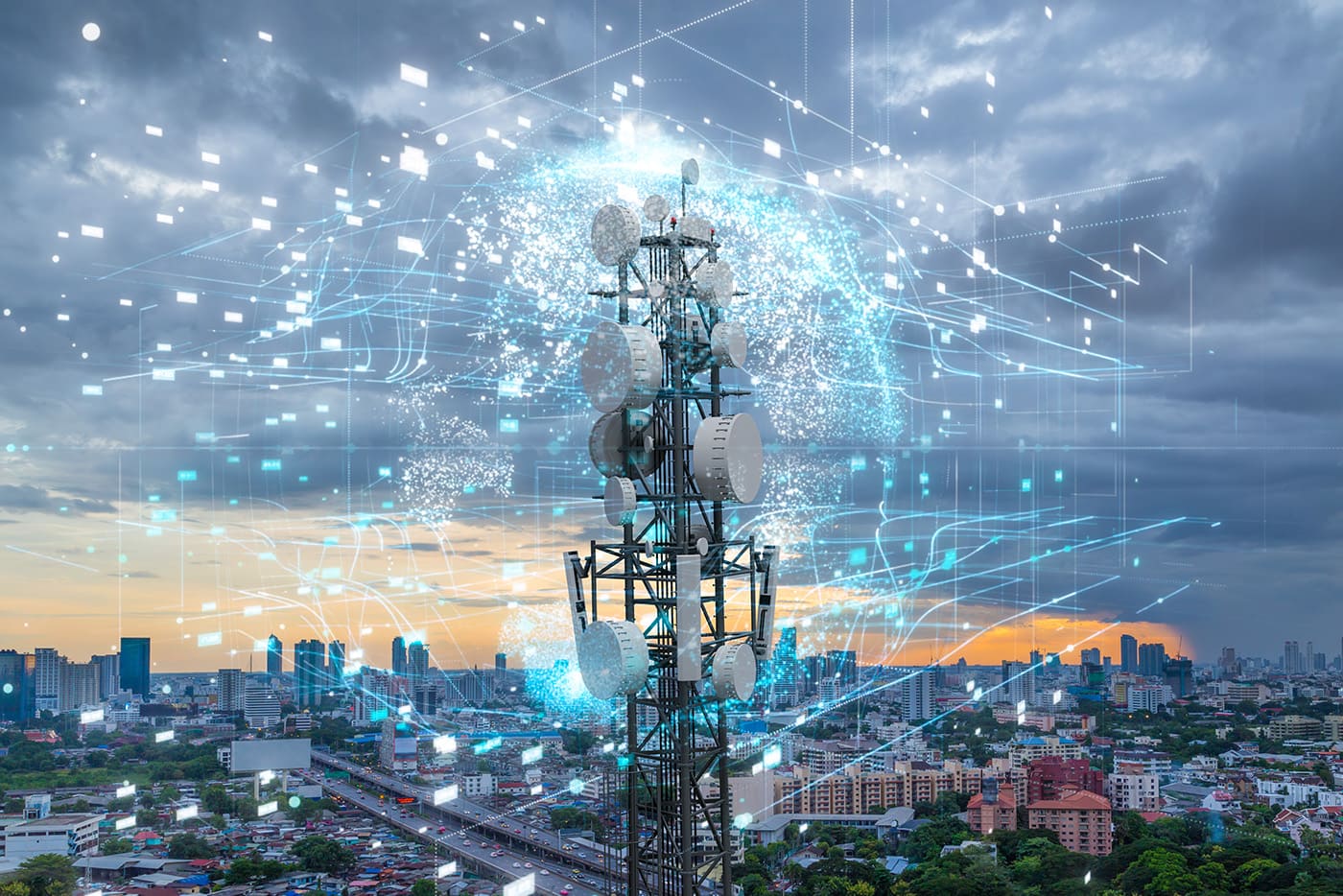The Top 4 Telecom Trends In 2023
4 January 2023
The next 12 months look set to be a bumpy year for many global markets, and communications service providers (CSPs) will not be entirely insulated from the volatility. To offset this, businesses are looking to step up innovation and digital transformation. In the telecommunications sector, there are a number of stand-out technologies and trends that will increasingly be leveraged to boost customer experience, network and business resilience, and value propositions. Here, I highlight those that I feel will make the biggest impact in 2023 – the ones that no telco operator or CSP can afford to ignore.

Cybersecurity and Resilience
In 2023, it will become more important than ever that network operators take all appropriate steps to secure themselves from both cyber-attacks and turbulent market conditions. Although covering both bases requires different technologies and tactics, both are equally important when it comes to ensuring that a business is truly robust and ready to face up to the future. From a security point of view, the biggest threats have traditionally been seen to come from three factors; hackers and thieves looking to expose data that can be sold on or used to compromise a business, corporate espionage, and a lack of awareness among employees of basic security measures such as safe use of passwords and prevention of phishing attacks. As telcos provide the “backbone” infrastructure that enables other digital services – from movie streaming to corporate email networks – to function, they are often highly attractive targets for those with less-than-pure intentions. As such, they are under extreme pressure to ensure that there are no exposed "back doors" thanks to the implementation of internet of things (IoT) architecture, uneducated users, or third-party partners. Understanding and mitigating these threats will be a core task for telecom operators in 2023.
Cloud Adoption
Telecom service providers will continue to see the benefits of moving critical IT infrastructure into the cloud – public, private and hybrid – rather than activating more private data centers. In 2023, telcos will harness the cloud in order to create scalability by building services that can be ramped up when demand increases and scaled back when outside factors – such as cost-of-living or supply chain disruption – dictate that business will slow down. It also means that new services can be bought to market quickly and trialed to assess customer uptake without incurring huge losses due to infrastructure expenses if they are not immediately hugely popular. This will be increasingly useful as the race to monetize 5G services gathers pace, and CSPs will differentiate themselves by how quickly and efficiently they can put tools that make this possible into their customers' hands. This year, we saw major players such as AT&T, Vodaphone, and Telefonica announce new deals with cloud providers to handle their data processing operations. In the coming year, we can expect this to expand as telcos build services to enable 5G and edge computing services through cloud platforms.
Artificial Intelligence
Artificial intelligence (AI) has the power to transform just about every industry, and the telecom industry is certainly no different. It is used for many purposes, from streamlining customer services to predictively managing the flow of communications traffic across the network. Virtual assistants and chatbots enable telecom operators to respond more efficiently to requests for help with technical support, troubleshooting, and network maintenance. Network traffic optimization uses AI algorithms to adapt and reconfigure networks as their usage changes, assigning more resources to route traffic where demand is highest and scaling back when demand slows. AI and machine learning (ML) are also used to detect fraudulent activity, such as illegal and unauthorized access to networks or specific areas of networks or theft of services via stolen passwords and user profiles. As AI technology becomes more sophisticated and the challenges facing telecom operators become more complex, we can expect to see even more interesting and unique use cases for AI opening up in the sector during 2023.
True or “Stand Alone” 5G
5G has been around for several years now, but most of the services offered by consumer CSPs do not use a “pure” form of the technology, instead piggybacking their services on existing 4G (LTE) infrastructure. This means it’s not likely that users are using it to its full potential. The next step in the rollout of 5G will be the move to what is being called "stand-alone" 5G. This is where experts say that many of the interesting upgrades and features that 5G makes possible, such as network slicing, will come into their own.
If you’ve got a 5G handset today, you would be forgiven for thinking that the only thing the new and much-hyped technology offers is "more of the same, but faster." In fact, 5G has the potential to enable new types of applications and digital services. It also brings greater security and stability, meaning that it will make it possible to carry out tasks such as remote surgery that existing mobile networks just aren’t robust enough to handle.
Related Articles
The 12 Best Smart Home Devices Transforming Homes in 2025
By now, “smart” versions exist of just about every home appliance, gadget and gizmos we can think of. However, manufacturers continue[...]
11 Most Reliable AI Content Detectors: Your Guide To Spotting Synthetic Media
Since the launch of ChatGPT just two years ago, the volume of synthetic – or fake – content online has increased exponentially.[...]
The AI-Powered Citizen Revolution: How Every Employee Is Becoming A Technology Creator
Something remarkable is happening in organizations around the world.[...]
6 Mistakes IT Teams Are Guaranteed To Make In 2025
The next wave of artificial intelligence isn't just knocking at enterprise doors - it's exposing fundamental flaws in how organizations approach technology transformation.[...]
2025’s Tech Forecast: The Consumer Innovations That Will Matter Most
Consumer technology covers all of the tech we buy to make our lives more convenient, productive or fun.[...]
7 Healthcare Trends That Will Transform Medicine In 2025
Healthcare has evolved dramatically in recent years, with technology driving countless new opportunities, just as demographic and societal factors have created new challenges.[...]
Sign up to Stay in Touch!
Bernard Marr is a world-renowned futurist, influencer and thought leader in the fields of business and technology, with a passion for using technology for the good of humanity.
He is a best-selling author of over 20 books, writes a regular column for Forbes and advises and coaches many of the world’s best-known organisations.
He has a combined following of 4 million people across his social media channels and newsletters and was ranked by LinkedIn as one of the top 5 business influencers in the world.
Bernard’s latest book is ‘Generative AI in Practice’.










Social Media